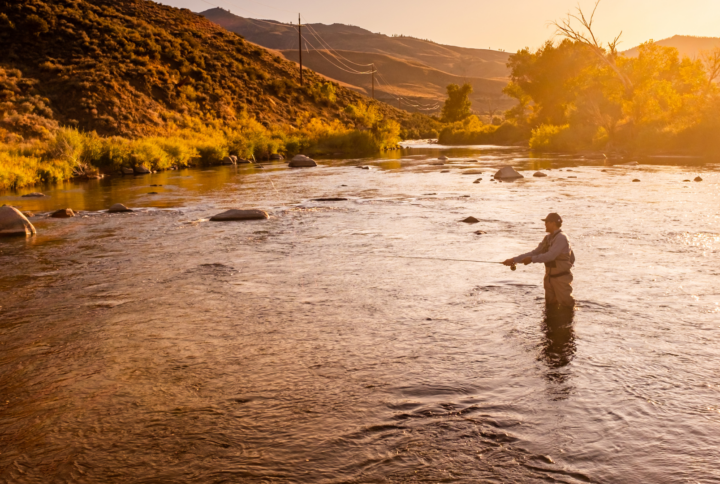Little Snake River - Dixon - Wyoming
Fly Fishing River Report & Conditions
Little Snake River – Dixon - Water Flow Chart
Little Snake River – Dixon - Weather report & radar
Little Snake River – Dixon - General hatch chart
| Month | Hatch | Time of Day | Recommended Fly Sizes | Popular Fly Patterns |
|---|---|---|---|---|
| January | Midges | Afternoon | 18-24 | Zebra Midge, RS2 |
| February | Midges | Afternoon | 18-24 | Zebra Midge, RS2 |
| March | Blue Wing Olives, Midges | Afternoon | 18-22, 16-20 | Pheasant Tail, RS2, Zebra Midge |
| April | Blue Wing Olives, Midges | Afternoon | 18-22, 16-20 | Pheasant Tail, RS2, Zebra Midge |
| May | Blue Wing Olives, Caddis | Afternoon, Evening | 14-20 | Pheasant Tail, Elk Hair Caddis |
| June | Green Drakes, Yellow Sallies, Caddis | All Day | 12-16, 14-18 | Elk Hair Caddis, Parachute Adams, Stimulator |
| July | Green Drakes, Yellow Sallies, Caddis | All Day | 12-16, 14-18 | Elk Hair Caddis, Parachute Adams, Stimulator |
| August | Caddis, Terrestrials (Hoppers, Ants, Beetles) | All Day | 12-16, 14-18 | Elk Hair Caddis, Hopper Patterns |
| September | Caddis, Terrestrials (Hoppers, Ants, Beetles), Blue Wing Olives | All Day | 12-16, 14-18 | Elk Hair Caddis, Parachute Adams, Hopper Patterns |
| October | Blue Wing Olives, Midges | Afternoon | 16-22, 18-24 | Pheasant Tail, Zebra Midge, RS2 |
| November | Midges | Afternoon | 18-24 | Zebra Midge, RS2 |
| December | Midges | Afternoon | 18-24 | Zebra Midge, RS2 |
Little Snake River – Dixon Access Points
The Little Snake River near Dixon provides some of the best spots for fly fishing. Whether you’re a seasoned or novice angler, these access points offer impressive opportunities:
- Dixon Day Use Area: This is one of the easiest points to reach, situated just off Highway 70. You can start your fly fishing journey here.
- Focus Ranch: About 13 miles northwest of Dixon. It’s a private property, but they allow fishing with prior permission.
- Savery Creek Access Point: Located roughly 20 miles from Dixon, this spot is easily accessed via county road 82.
- Baggs Crossing: It’s about a 25-minute drive from the town of Dixon. It sits alongside the river on Highway 789.
- The Goddard Place: It’s a 45-minute drive southwest of Dixon. An excellent choice for some quiet, uninterrupted fly fishing.
Remember, every location requires respect for its landscape and regulations for a pleasant fly fishing experience.
Little Snake River – Dixon Fishing Spots
The Little Snake River in Dixon is a great spot featuring top places for fly fishing. Here’s a few to consider:
- Canyon Reach: Widely known and favoured due to abundant brown and rainbow trout. Undoubtedly a trout paradise.
- Brush Creek Ranch: A private section of the river providing excellent fly fishing opportunities. You need to obtain fishing privileges first.
- Six Mile Gap: The river in this area is broadly divided into riffles, pools, and cut banks, offering great diversity for fly fishers.
- Lower Little Snake River: This spot is ideal for anglers keen on catching large Northern Pike.
- Savery Creek: It is a tributary of the Little Snake River and contains a good population of brown trout.
Little Snake River – Dixon Local Fish Species
- Trout
- Brook Trout
- Brown Trout
- Rainbow Trout
- Cutthroat Trout
- Sucker Fish
- Mountain Whitefish
- Northern Pike
- Yellow Perch
- Green Sunfish
- Bluegill
About the Little Snake River – Dixon
Winding its way gracefully through the states of Wyoming and Colorado, the Little Snake River is a 155-mile-long tributary of the larger Yampa River. Its vivid history tells a tale filled with exploration, development, and endurance.
- Boost for Exploration: In the early 19th century, the verdant valley of the Little Snake River served as a route for trappers and explorers, opening the region for further exploration.
- Promise Land for Settlers: By late 19th and early 20th century, ranching and farming settlers marked their presence, turning the river valley into bountiful farmland.
- Enduring Community: The small town of Dixon, Wyoming, nestled on the bank of this river, evolved over time into a tight-knit community. Despite its size, it held strong during the Great Depression and World War II, and is still thriving today.
- Environmental Importance: Today, the river and its associated wetlands play a crucial role in maintaining local biodiversity, supporting various fish and wildlife species.
Infused with tales from the past, the Little Snake River and Dixon offer a glimpse into the American pioneering spirit!
Community Contributions
Be part of the fishing community-
Submit your update!
Coming Soon



